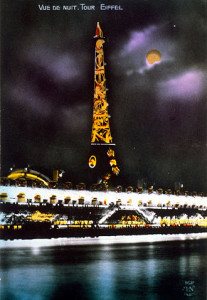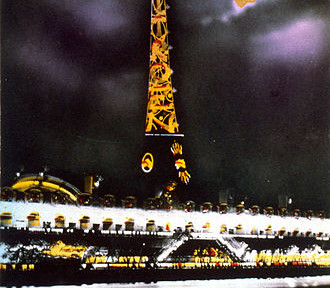 Art Decoratif d’Ecologie – Debuting at JCK: Las Vegas 2014
Art Decoratif d’Ecologie – Debuting at JCK: Las Vegas 2014
The basis of this collection’s design is the era of Art Deco, with an Irthly twist. The Art Deco design and style movement came into world recognition in the 1920’s. Especially significant was the conference held in France in 1925: Exposition Internationale des Arts Décoratifs et Industriels Modernes (International Exposition of Modern Decorative and Industrial Arts), where much fanfare ensued. The era in which Art Deco flourished was a dynamic one. Advances in many aspects of society interplayed with the character of Art Deco. Advances in transportation and communication allowed more people to travel around the world and discover many cultures and their design aesthetic which tourist brought home. Egyptian, Mayan, Persian, and other ancient civilizations were both a fascination and fad to integrate into contemporary design. Technological breakthroughs in manufacturing allowed other materials to be introduced and expanded the possibility of design. These breakthroughs also caught-on to government participation through building code and public structures. Contemporary artistic styles like Art Noveau, Cubism, Constructivism, and Modernism suddenly intertwined with these newly integrated advances, concepts, and enlightenments to create the wonderful broad amalgam now known as Art Deco.
David Alvarado believes that our current era contains striking similarities. Advances in technology and communication has allowed us to connect to other cultures and people, not on a superficial, conceptual level, but in a more direct way where we feel like an active participant in a global web of minds. Advances in biology, physics, and operational computing and robotics have advanced industry which is influencing all genres of design, including jewelry-making. Even similarities of the government’s role are taking part. Governments across the world are being critically evaluated, implemented, and deconstructed in an attempt to represent this epoch’s worldview and values.
Alvarado wants to play a small role in this Art Deco-like worldview by adding his collection to the cocktail of ideas and aesthetics.
All the advances that are influencing this Art-Deco-like movement have also influenced jewelry-making. Advances in communication and technology have allowed the consumers to connect more directly with the designer or founder. This allows access to the visions, inspirations, and concepts behind designs and collections. Consumers suddenly demand that the products and/or services mean something. At Irthly, we value that accessibility and share with you our vision. Our ART D’ECO Collection follows the same inspiration as our Classics Collection: We want to raise the value and preciousness of birth and creation; and development and nurturing.
Advances in jewelry manufacturing have also played a huge role in jewelry design. Innovation in computer design, casting and printing, and lasers have significantly changed the jewelry dynamic. Some comment that this influence has made jewelry too commercial and aesthetically unoriginal. However, there are others that are taking great strides in using the tools to create designs that represent the times. Alvarado’s knowledge in advanced jewelry techniques has allowed integration of biological, organic materials to be introduced into enduring, fine jewelry. So similar to the Art Deco era where new materials were introduced into design and construction, Irthly is introducing organic “Eco” material to his Art.
The Art Deco era was also characterized by the lavishness and grandiosity that opulence provided. That was both a great symbol of the human capacity and possibility, and an evident display of income inequality. Alvarado does not deny that our field of art usually caters to the well-to-do, hence falling to similar negative connotations of the Art Deco era. Income inequality is something that needs to be addressed. Irthly addresses this concern by creating statement pieces, often
 containing material not often perceived as precious, so that the consumer can have a platform, a space, a possibility to address value, preciousness, and the role it plays in society. It is a near guarantee that someone will comment on your Irthy piece which will give grounds to voice your opinion on the matters of the world as you see fit. Alvarado states, “As fine jewelry designers, what we can do is provide a space where the wearer can give her or his statement regarding matters that matter to them.”
containing material not often perceived as precious, so that the consumer can have a platform, a space, a possibility to address value, preciousness, and the role it plays in society. It is a near guarantee that someone will comment on your Irthy piece which will give grounds to voice your opinion on the matters of the world as you see fit. Alvarado states, “As fine jewelry designers, what we can do is provide a space where the wearer can give her or his statement regarding matters that matter to them.”
We hope you support and wear our designs that celebrate a certain resurgence of the Art Deco era. Irthly presents to you our Art Decoratif d’Ecologie: ART D’ECO.
Design Philosophy
The jewelry created in the Art Deco era continues to hold high esteem. With its lines and levels that contain in them lavish detail, collectors all over the world cherish them as one of the greatest jewelry pieces created. Alvarado is humbled by that fact and departs from such design. Instead, Irthly celebrates other design creations prevalent in the Art Deco era. Architecture, interior design, and other habitat accessories were Alvarado’s muse. Organic PalmIvory©, continues to be the focal material. This time however, the material design contains more depth. Layers and steps, facets, and machine-like curves, common in all Art Deco pieces, are featured in the Organic PalmIvory©. Metals and diamonds continue to be a point of accent instead of the body of the jewelry. Faceted gems take a greater role. Irthly’s frequent use of naturally formed and shaped crystal tourmalines and beryls (emeralds), and other faceted gems that effectively represent the Art Deco era, is the reoccurring signature of Irthly’s ART D’ECO.
Art D’Eco Collection
Terminals Series
A homage to material or mental travel; Irthly invites you to explore departures and arrivals, gates, and receptions so often displayed in the scenes of the 1920s. To every destination, goal, or aspiration, there is a place of departure and arrival. Irthly places value in such points. Yet we value more what is in between and beyond the two ostensive points. That is truly precious.
Sepulcher (geb’s tomb) Series
Celebrating the Egyptian influence in Art Deco, Irthly presents Geb’s (The God of Earth, minerals and gems) tomb. As the outer spear points towards the earth and the inner spear points to the stars and sky (A call to Geb’s wife, the goddess of the stars and sky), it reminds us of the fragile relationship between heaven and earth, and our role in it; and in the balance and harmony of relationships. Being the tomb of Geb, it also symbolizes the dark possibility of Earth’s demise if humanity becomes careless in its eco-consciousness.
Fontaine Series
To the fountain of life! Fountains character the Art Deco era for their aesthetic appeal and their cultural significance. Irthly wants to emphasize the importance of water in our life. You can’t say Tagua (Vegetable Ivory) without “agua.” Let’s appreciate and celebrate the currents that carry the elixir of life.
Streamline Series
In the later end of the Art Deco movement, the Streamline Modern style achieved an odd distinction: By rebelling against Art Deco, it became part of Art Deco. After the depression, the Streamline intent was to gather steam and speed with “the faith in technology and a profoundly New World hopefulness about an ever brightening future.” Irthly likes to think that notion is rekindling. We too also have faith in an ever brightening future where people value more precious elements of our world.
Streamline Miami
Streamline Pan Pacific
Motif Series
The Motif Series show a water “swoop” accent that are prevalent in all of Art Deco designs. Irthly wants to highlight and give praise to such an endearing element of those times.






















